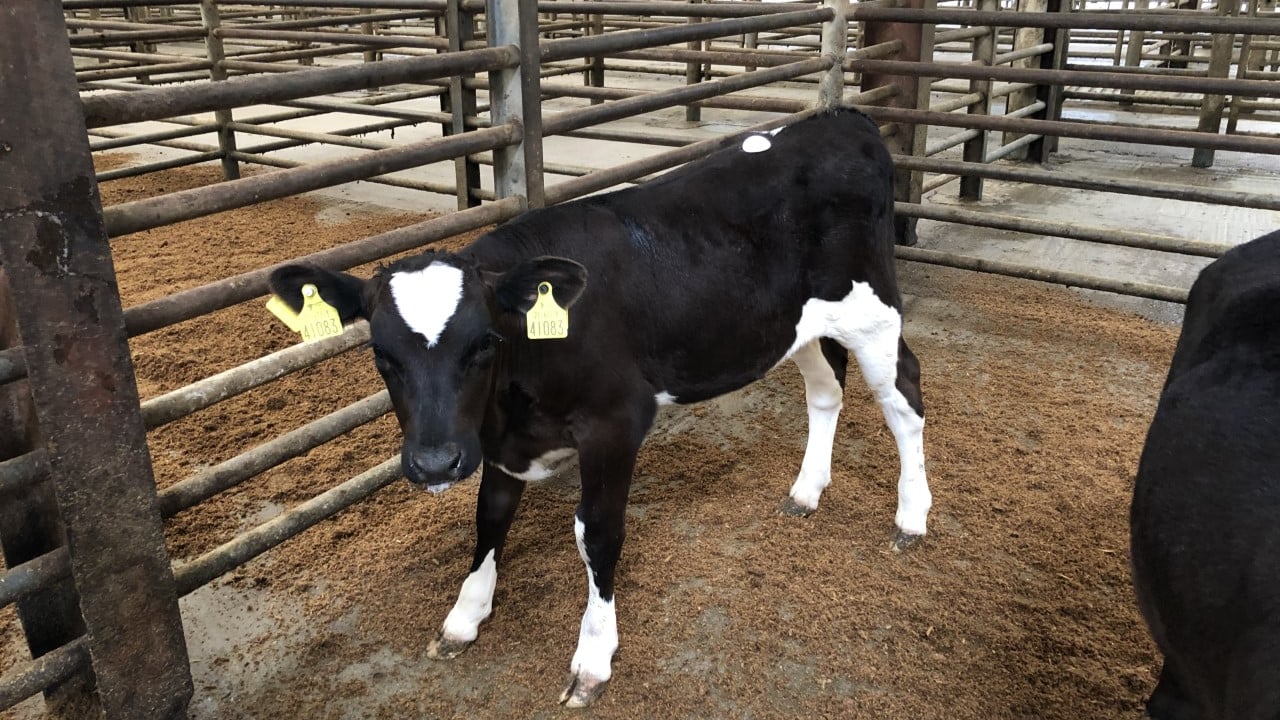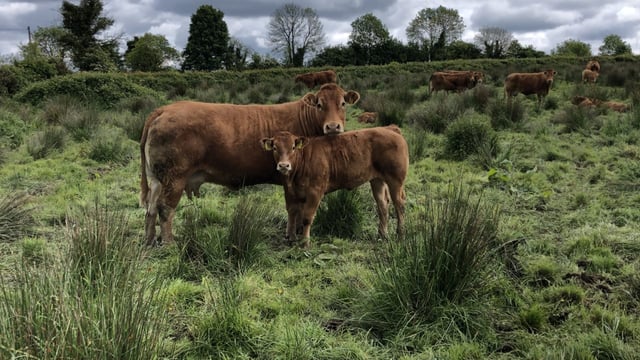Getting the best price for your calf as demand soars
Calf sales have become more frequent across the country as we get into the thick of calving season. That means that the time has come to prepare to get them in tip-top shape.
On a lot of dairy farms, the aim is to sell calves starting from two weeks of age, which means that there is only a short amount of time to get the calf looking fit and healthy.
The trade of young calves has had a strong start in 2025, making it all the more more urgent to get them in good condition for selling.
No matter what, buyers are going to want to see a good strong calf in the ring and this may dictate the price achieved for your non-replacements.
Buyers can now use the commercial beef value (CBV) to see what the genetic potential of the calf is and whether or not it is worth investing in.
However, while the CBV is a great asset for buyers, they may still be reluctant to purchase a calf with a high CBV that doesn't hold herself well in the ring.
Dairy farmers need to realise that it is human nature to place great importance on the visual appearance of the calf.
The hard work is done now by getting the cow in-calf and using a high dairy beef index (DBI) bull to produce a high CBV calf, but farmers would be naive to think that this alone will earn them a competitive price for their calf.
Calves being brought to the mart for sale or being sold off farm should be:
- Bright;
- Responsive;
- Alert;
- Mobile;
- Have clear bright eyes and ears that are alert;
- Interactive with their environment.
Although you may see a change in the prices for some of the non-replacement animals this year, it is still important that you get the basics right.
Castleisland Mart in Co. Kerry saw record prices last Monday with over €3.80/kg paid in some cases for dairy-beef cattle in the 280-300kg weight bracket.
In Cahir Mart, Co. Tipperary on Friday, February 7, a pen of seven Angus-cross bulls weighing 115kg each sold for €520/head or €4.52/kg.
Another group of four Shorthorn bulls with an average weight of 69kg sold for €350/head.
Two Friesian bulls weighing 47kg each sold for €110/head while two lighter Friesian bulls weighing 42kg each made €70/head.
Agriland was at Carnaross Mart last Monday, February 7, where a 57kg Angus heifer sold for €345 and two Simmental bull calves weighing 98kg sold for €525/head.
At Bandon Mart, Co. Cork, their Monday calf sale saw a 64kg Hereford-cross bull calf sold at €470 and an 81kg Friesian bull calf sold at €415.
The first step to ensuring a fair price for your dairy-beef calves this spring is to get your colostrum feeding right, something that is single-handedly the most important aspect of calf rearing.
It is important for farmers to ensure that calves are receiving high-quality colostrum and are receiving enough of it as soon as possible after calving.
Unlike humans, antibody transfer does not occur in utero in cows, which means it is vital for the calf to absorb enough antibodies from colostrum as soon as possible.
If the calf does not receive colostrum or receives poor quality colostrum, it will be at a higher risk of illness and death, and even if they survive, it will have reduced growth rates.
The ‘1-2-3’ colostrum rule establishes that calves get colostrum from the first milking for the first feed, within two hours of the calf’s birth, and that they are given at least 3L.
When a calf is being sold, a buyer can't tell whether they have gotten enough colostrum or not, but a calf that has gotten sufficient colostrum would have had an excellent performance, be healthy and make average daily gains (ADG) for the farmer, enhancing future performance for the buyer.
The performance of the animal in weeks after purchase may be an indicator that the calf did not receive enough colostrum.
People purchasing calves will often return to the same buyer if they are getting healthy animals, but they will not if the calves are more prone to sickness.
Colostrum certainly gets the calf off to a flying start but it is not going to prevent them from getting sick if management is not to a high standard.
Calves should frequently be topped up with fresh straw, and farmers should ensure there is no draught in the shed affecting the body temperature of the calf.
Calves should have access to water and hay or straw as a fibre source, while gradually getting introduced to coarse ration to develop the rumen.
Calves should be grouped as soon as possible. Non-replacement animals of a similar age should be kept together and, ideally, sold together, which should reduce the level of stress placed on the calves.
Before a calf leaves for a mart sale or is sold from the farm, they should also be offered a feed.
Healthy, well-grown, full-looking animals are more likely to catch the eye of buyers and should result in better prices for the calves.





